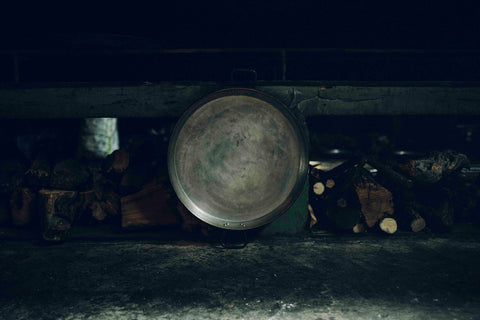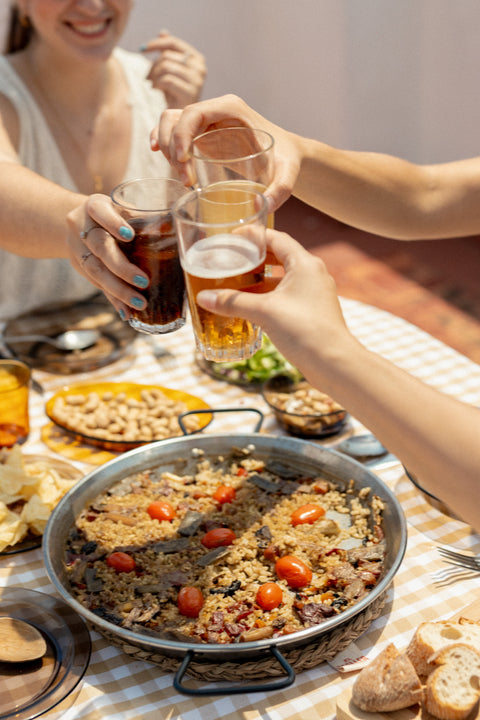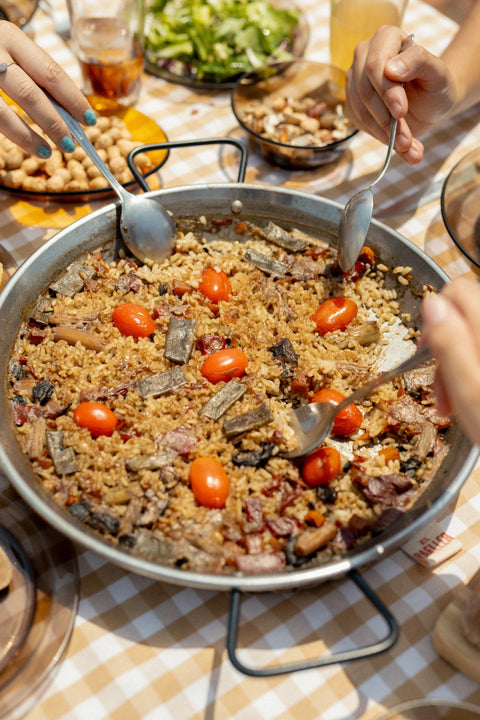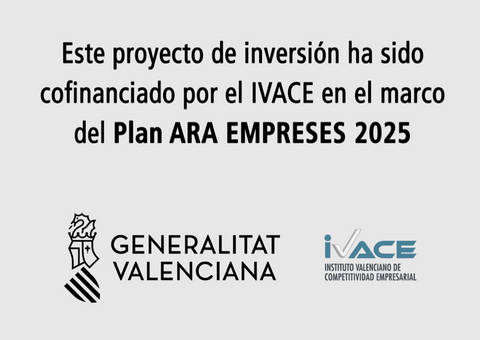The experience of making paella can be just any old experience if you cook it in any old pan. I'm not exaggerating. Imagine how important the pan is, given that the dish itself is named after it: paella. That metal contraption with two large handles and a flat surface, which, like no other, ensures the perfect cooking of the rice and transforms its enjoyment into a ritual.
Let's take it one step at a time. First, the cooking.
The paella pan is ideal for cooking Valencian-style rice dishes, meaning rice with dry, loose, and flavorful grains. There are two types of paella pans: polished steel—popularly called "iron paellas"—and enameled steel. The former are the traditional type and most commonly used by professionals. The latter have an enamel coating that makes them easier to maintain—unlike iron pans, they shouldn't be oiled to prevent rust—and prolongs their lifespan, which is why they are more common in homes. Both types share the technology and design that promotes even heat distribution across the entire surface.
THE SIZE OF THE PAELLA MATTERS. A LOT.
It's crucial to use a paella pan of the right size for the number of servings you're cooking. If you use one that's too small, the rice will clump together and not all the grains will cook evenly; the ones at the bottom will burn so the ones on top don't remain raw, or vice versa. It's simple logic: even cooking requires the rice to be spread as evenly as possible, and for that, you need to be generous with the size of the paella pan. For two servings, a diameter larger than 34 cm is ideal; for four servings, 42 cm; and if in doubt, always go for the larger one.

Second part, but no less important, eating -from- the paella.
Paella is not just the tool for cooking rice. It's also the vessel in which to eat it. Much has been said about enjoying this communal dish, capable of generating both camaraderie and confrontation at the table. But no one has done it as impeccably as Paco Alonso, co-founder of Wikipaella. The following lines, which make up the famous "Paella Eating Manual," are his:
1. Paella is like a box of cheese wedges. From the angled edge towards the center, scrupulously respecting the neighbor's cut. It's best to maintain the "cavallonet," a boundary line, an insurmountable wall for as long as possible.
2.- The diners should be distributed around the paella in an equidistant and accessible manner.
3. It is not advisable for people with large appetites to be together; they should be placed between those with smaller appetites.
4. The most appropriate utensil for eating paella is a spoon. A fork is tacky.
5. If a diner wishes to squeeze a few drops of lemon juice, they are free to do so, but they must ask their neighbors for permission and take care not to splash them. Lemon was once used to degrease fingers or clean soot.
6. The meal begins after the rice has rested for the prescribed period, and the solemn proclamation of the patriarch, or person of highest social rank: “Vinga que es gela l'arròs!” (Tr.: Come, the rice is getting cold!)

7 - If the paella is good, the cook will be praised continuously every two spoonfuls, throughout the entire meal. Some frequently used phrases are: “Cada gra d'arròs val vint duros” (Tr.: Each grain of rice is worth 60 euro cents), “T'ha eixit ben senceret l'arròs” (Tr.: The rice came out perfectly cooked), “Cague en la mare que et va parir, això està rebó” (Tr.I'm glad your mother taught you to cook paella so exquisitely. There are many more expressions as popular as these.
8. The scraps, vegetables, and pieces of meat that the diner does not want can be placed delicately in the center of the paella for someone else to enjoy.
9.- If a piece of meat comes out of the paella, it cannot return to it under any circumstances, much less in the form of bones.
10. If someone encroaches on another diner's space, and it's the first time, they might receive a slight disapproval accompanied by the monosyllable "Xé!" followed by "fes el favor" (do the favor). If they repeat this transgression, they could be reprimanded more strongly with the following phrase: "Eres poc fill de puta" (Tr.: You're a bit of a rascal). Although it might seem offensive, in Valencian it's a term of courtesy and camaraderie.
11. A diner is considered to have left when they rest their spoon on the edge of the cauldron, or say: “Estic fart, ja no puc més!” (Tr.: I'm fed up, I can't take any more). At that moment, their space can be occupied by their immediate neighbors, always politely, by knocking down the small wooden stand and breaking the succulent boundary, but without taking everything.
12. It is in very bad taste to turn the paella pan over to access other areas where there is still rice. The only one who could do that was Joan Monleón.
13. If the paella pan wobbles due to instability, and a volunteer offers to hold the handle to prevent it from moving, their glass will remain full of drink.
14.- When the spoon touches the metal bottom and the longed-for “Socarraet” appears, you have to stay calm and distribute the black gold equally so as not to end up “like the ball of Torrent”.
15.- The meal ends when the diners leave or there is nothing left in the pot, an indisputable sign that the paella was good.
Cooking and tasting are part of the paella ritual. It's an experience we know begins—when we gather with our loved ones around it—but never when it ends. This unique experience, repeated in Valencian homes every Sunday, wouldn't be possible without that metal contraption called a paella pan.
Jose Maza






